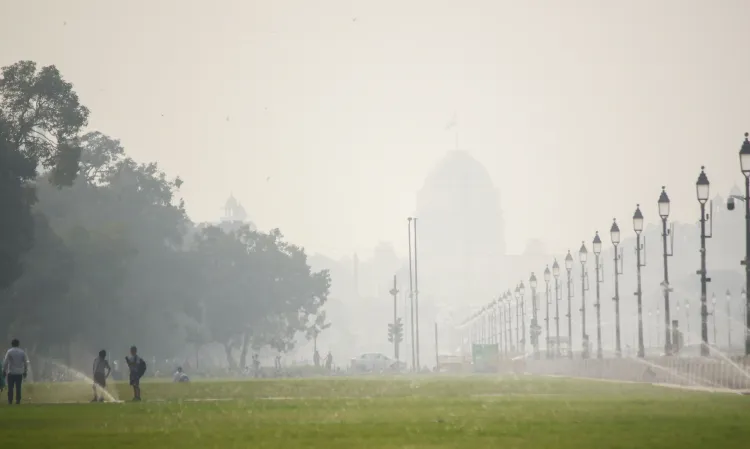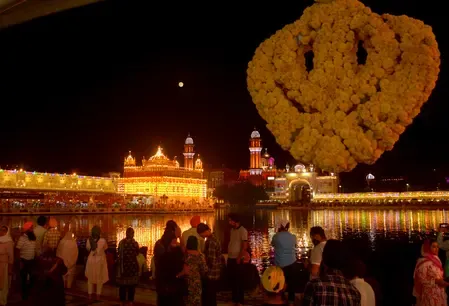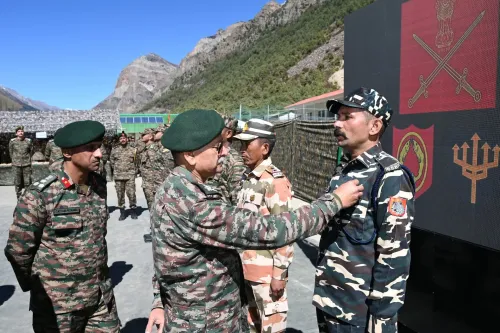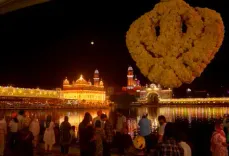Why Did Delhi-NCR Experience 'Very Poor' Air Quality This Diwali?

Synopsis
Key Takeaways
- Delhi-NCR faces severe air pollution post-Diwali.
- The AQI dropped to 'very poor', prompting action.
- Stage-II of the GRAP is now in effect.
- Residents encouraged to utilize public transport.
- Continuous monitoring and public awareness are essential.
New Delhi, Oct 20 (NationPress) Residents of the Delhi-National Capital Region (NCR) awoke to hazardous air on Monday morning, with the Air Quality Index (AQI) plummeting into the "very poor" range.
The Central Pollution Control Board (CPCB) reported that the national capital documented an AQI of 335 at 8 AM on Diwali morning, following extensive firecracker usage during the festival, which resulted in significant noise pollution and enveloped the Delhi-NCR area in smoke.
The CPCB's projections for the upcoming days reveal a similar pattern, with air quality likely to decline further into the "severe" category on Tuesday and Wednesday, as noted by NDTV.
Expectations for poorer air quality are heightened due to the Supreme Court's allowance for people to ignite green crackers for a limited duration.
Amidst this crisis, the Commission for Air Quality Management (CAQM) in the NCR and its neighboring regions has promptly activated Stage-II of the Graded Response Action Plan (GRAP).
The city's average daily AQI surged to 296 ("Poor") as per the CPCB, escalating to 300 by 6 PM and reaching 302 by 7 PM on Sunday, thus shifting it into the "Very Poor" category.
This alarming situation prompted an urgent assembly of the CAQM's GRAP Sub-Committee, which assessed forecasts from the India Meteorological Department (IMD) and the Indian Institute of Tropical Meteorology (IITM), indicating prolonged "Very Poor" conditions (301-400) in the near future due to localized emissions, stagnant winds, and temperature inversions.
In a decisive effort to mitigate the escalating pollution, the Sub-Committee unanimously endorsed a 12-point action plan under Stage-II, enhancing the existing Stage-I strategies. Agencies such as the Pollution Control Boards of NCR states and the Delhi Pollution Control Committee (DPCC) will enforce these regulations rigorously. The plan will commence with daily mechanical sweeping and water sprinkling on major roads, increasing machinery shifts, and dust suppression at hotspots and traffic corridors before peak hours to ensure appropriate waste management.
Stricter inspections at construction sites, targeted interventions at hotspots, and an unbroken power supply to limit diesel generator (DG) usage are also included. DG operations are confined to emergencies—such as hospitals, railways, Metros, airports, sewage plants, water pumps, national security projects, and telecommunications—as per directives issued on September 29, 2023. Traffic management will be improved with personnel positioned at congestion zones, while media outlets will disseminate pollution warnings and guidelines.
Higher parking fees aim to discourage private vehicle usage, while public transport—augmented by additional CNG/electric buses and Metro services with off-peak incentives—will receive a boost. Resident Welfare Associations are required to provide electric heaters to staff to prevent biomass burning, and only electric, CNG, or BS-VI diesel inter-state buses will be permitted entry into Delhi.
The CAQM calls on citizens to utilize public transport, avoid dusty construction sites, and refrain from waste burning, aligning with the Citizen Charter for Stages I and II.
The situation will be monitored closely, with regular reviews scheduled. Full GRAP details are available on the CAQM website. This escalation, driven by stubble burning and vehicular emissions, highlights the urgent necessity for regional collaboration to combat winter smog.









